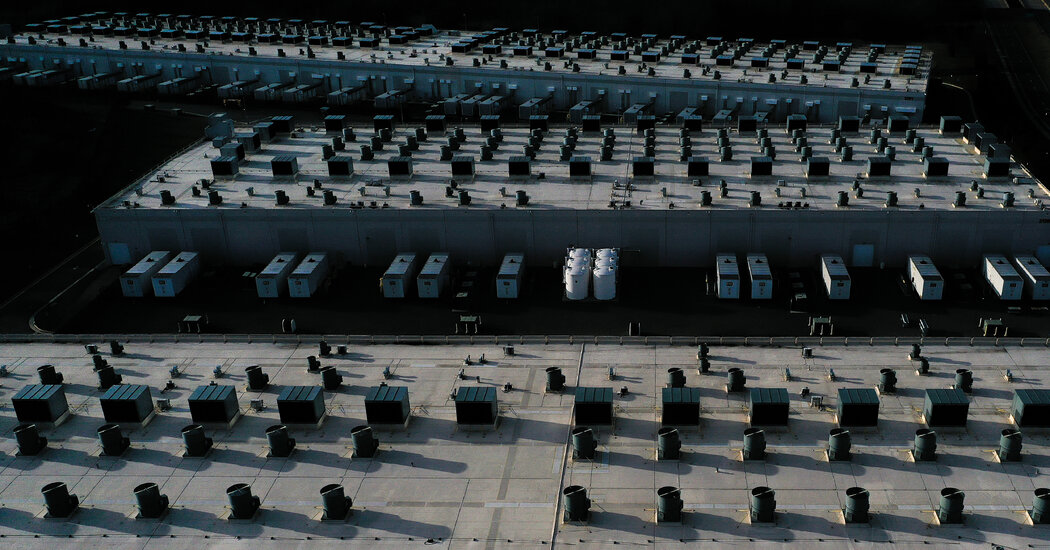The company said it effectively got all of the electricity it used last year from sources that did not produce greenhouse gas emissions. Some experts have faulted the company’s calculations.
Amazon announced on Wednesday that effectively all of the electricity its operations used last year came from sources that did not produce greenhouse gas emissions. But some experts have criticized the method the company uses to make that determination as being too lenient.
In its announcement, Amazon said it had reached its goal of 100 percent clean energy seven years ahead of schedule. The company said it invested billions of dollars in more than 500 solar and wind projects to achieve its target. The energy generated by those projects is equivalent to the electricity consumed by the company’s data centers, corporate buildings, grocery stores and fulfillment centers in 27 countries.
But because the solar and wind farms do not all directly power Amazon’s operations — most of that energy is sent to electricity grids that serve many businesses and homes — some critics say that the company’s calculations can create a misleading impression of its effect on the climate.
The clean energy projects Amazon has invested in can produce enough electricity to power the equivalent of 7.6 million U.S. homes, the company said. Amazon aims to reach net-zero carbon emissions from all of its operations, including its delivery vans, planes and other means of transportation, by 2040.
“We’re really excited about, obviously, the goal that we set five years ago and reaching it seven years early,” said Kara Hurst, vice president of worldwide sustainability at Amazon. “That’s quite an achievement for us.”
Amazon and other tech companies have said for years that they aim to eliminate the planet-warming effect of their operations. But those promises have been called into question recently by the industry’s decisions to invest heavily in artificial intelligence, which consumes vast amounts of electricity through its use of data centers.
